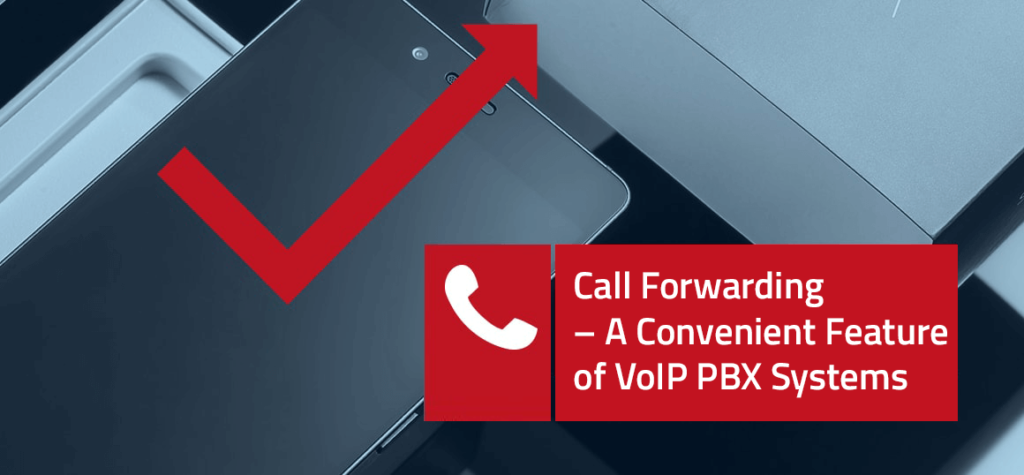Call Forwarding – A Convenient Feature of VoIP PBX Systems

By introducing the EasyCall VoIP virtual telephone exchange in your company, you only need internet access to receive a call from a client. You get one main landline number for the company or you can purchase a dedicated toll-free 80x number. This is a significant convenience for customers who can now easily remember your number and quickly contact the company. Discover the benefits of implementing call forwarding in your company in the third article of our new blog series about “Useful Features of a Virtual PBX.”
Additionally, each of your employees receives their individual internal number from which they can receive calls.
But what do you do, for example, when a technician is in the field and a customer calls? Or when we want to connect with a consultant who is no longer in the office? How do you maintain contact with a customer who calls after business hours?
This is where the call forwarding service comes in handy, which is one of the functionalities of a virtual VBPX.
How Does Call Forwarding Work?
Call forwarding is a feature that automatically redirects a call to a selected external number (mobile or landline) or to voicemail according to a preset scenario.
We can set a condition that forwarding activates after a specified time if the phone is not answered. We can also set fixed time intervals during which forwarding is active, for example, when the office is closed or on weekends.
If it’s known that the customer will not reach a particular number, forwarding can direct them either to another external number (e.g., the mobile phone of a consultant in the field) or to voicemail.
If we direct the customer to voicemail, remember to allow them to leave a recorded message. After receiving it, we can immediately contact the customer to respond to their inquiry.
What Does Call Forwarding Offer?
Call forwarding allows maintaining constant contact with customers, even when we know that we won’t be able to answer a call at a specific time.
In some industries, call forwarding is particularly important, for example in the tourism or construction industries. Employees of such companies often find themselves outside the office. Call forwarding is a way to keep in touch with them, which increases the flexibility of the company’s operations and improves internal communication.
However, the most important advantage of call forwarding is the high rate of customer reachability. Nothing frustrates our customers more than an unanswered call. By using call forwarding, we minimize such situations. We are available to the customer 24 hours a day. Therefore, if we care about customer experience, a virtual VBPX with the call forwarding feature will be a very good solution.
How to Enable Call Forwarding in EasyCall?
When choosing a VBPX provider, pay attention to whether the scheme for setting up call forwards is clear and intuitive. With EasyCall, you can do this using the “drag and drop” technique. See how simple it is. The call forwarding definition service is available in EasyCall business plans along with the Virtual PBX.
The configuration of call forwarding is available after logging into the virtual PBX interface accessible online. To create your first IVR tree, right after logging in, select the IVR option in the upper left corner, then click Add, enter the name of the tree and click Save. On the left, there is a list of functions that can be used in the tree.
Arranging functions works on a drag-and-drop basis, so to use a given function in the tree, click on it, hold, drag it onto the gray background and drop it in the desired location. A list describing each function is below. Descriptions of individual functions along with the visualization of the IVR tree creation process can be found on our page:
Virtual PBX and on the Help subpage
With the Call Connection element, we have the option to redirect the call to a specified number or group of phone numbers. In this element, there are two tabs:
Phone
In this tab, we can define a single phone number to which calls will be directed. We define the name of the connection, specify the phone number to which the connection should be made and define the duration of the attempt to reach this number (in seconds). We recommend setting a minimum value of 10 seconds.
Queue
Here, we can define a single number or an entire group of numbers to which calls will be directed. In the Users tab, we define names, numbers and priorities.
In the Music tab, we set the melody that will be played to the caller while waiting for the connection.
Another option is to define the message that the caller will hear while waiting for the connection. The text message will be converted into a voice announcement through speech synthesis.
In the additional settings, we can define the frequency of the announcement repetition and the order of directing calls to specific phone numbers.
We invite you to get acquainted with our virtual PBX during a 14-day free trial without any obligations!
